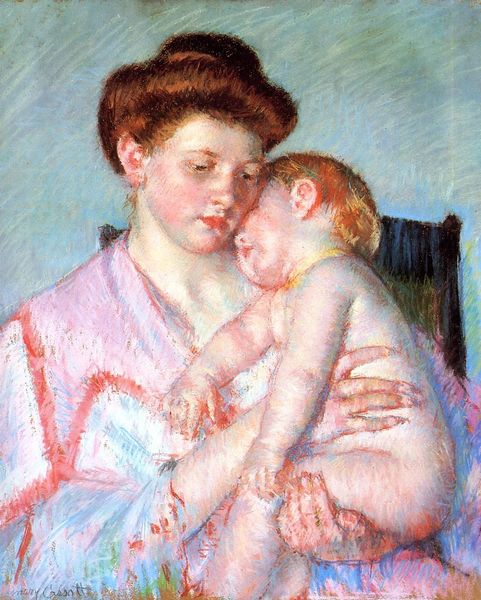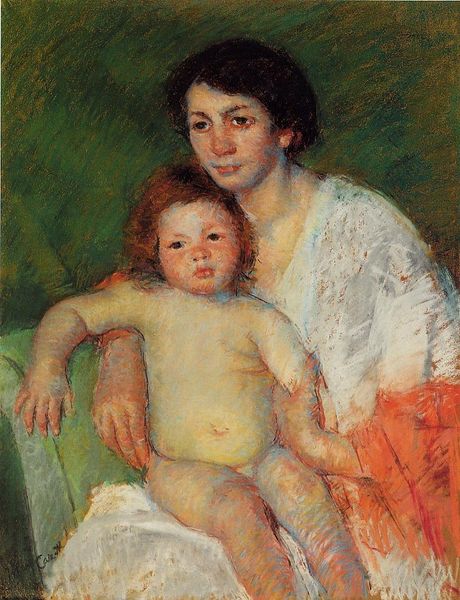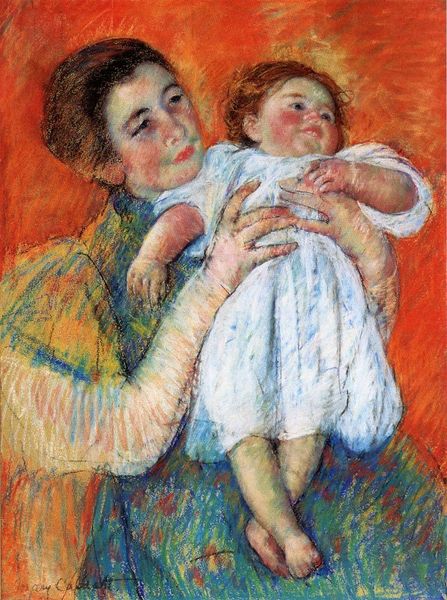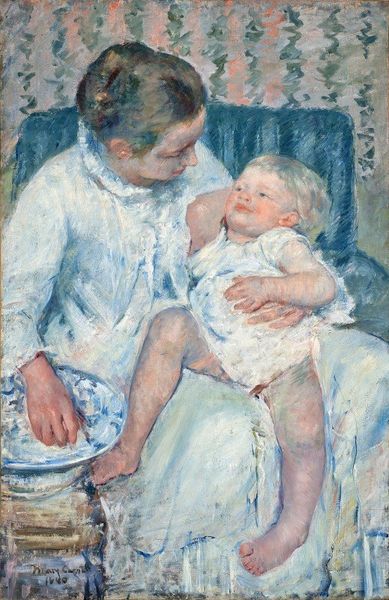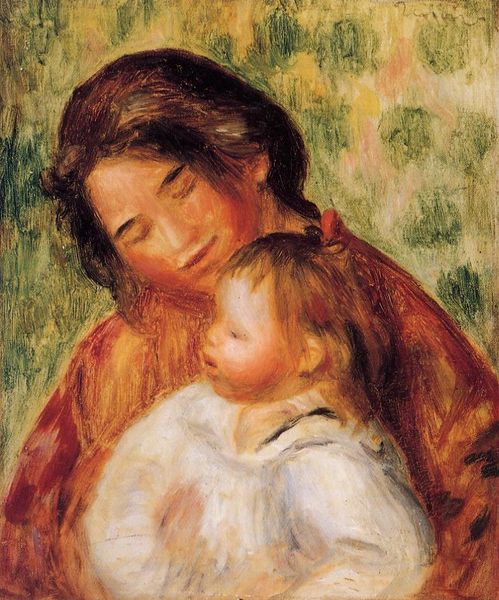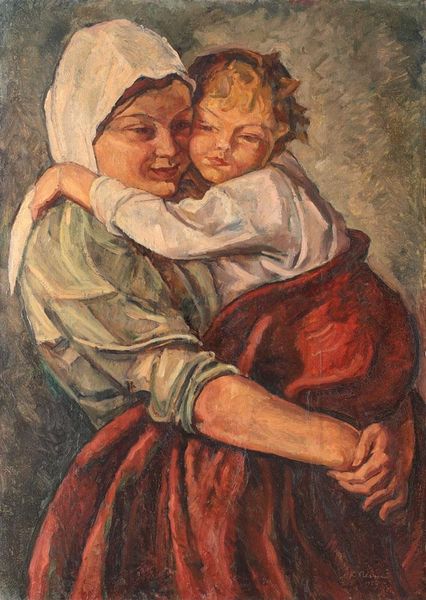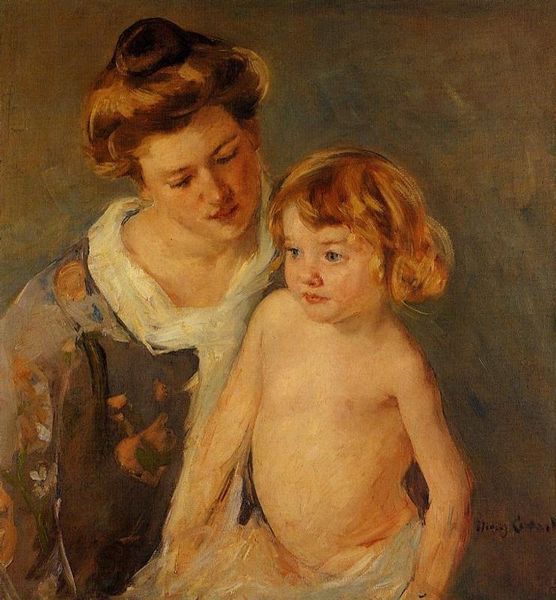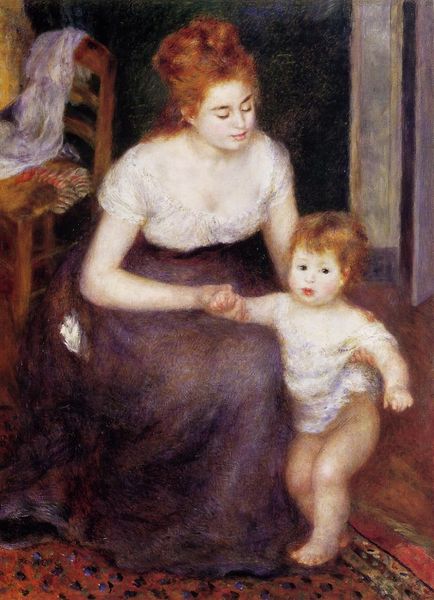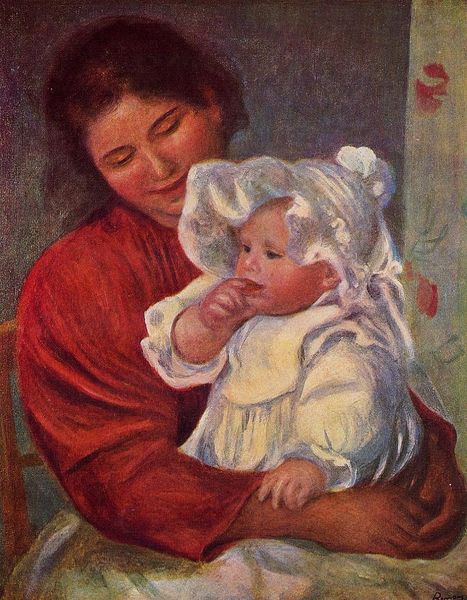
Copyright: Public domain
Curator: Standing before us is Renoir's "Claude and Renee," painted in 1903. An intimate oil on canvas capturing a mother and child. Editor: My first thought? A profound tenderness radiates from this piece. The mother's gaze, soft and protective, melts me. The delicate brushstrokes add to the feeling of ethereal beauty and fragile emotions, like catching a dream about fleeting, tender moments. Curator: Exactly. Renoir, always drawn to domestic life, positions it beautifully within the larger socio-historical turn toward recognizing childhood as precious, distinct and deserving careful representation in public life. The image plays into a complex, evolving narrative surrounding middle-class, intimate family relationships in France. Editor: And how Renoir renders the light! It’s not just illumination; it's as though the love between mother and child has its own radiance, creating halos of warmth. Did you notice that his focus isn’t photographic accuracy, it's more about conveying how a scene feels rather than how it looks. Curator: Absolutely, Impressionism valued sensory impressions above all. What some view as distortions I believe contribute toward what makes this piece stand out. For example, the simplification of their white garments that frames the subjects' emotional complexity can easily be seen as part of Impressionism's evolving visual language. Editor: But there's a push and pull. While the colours and the loose brushwork give us that signature Renoir lightness, a sense of quiet joy, the expressions, especially in the child's serious little face, also hint at something more… complicated. Perhaps life's inevitable seriousness encroaching upon pure joy? Curator: Perhaps the realities of being both mother and child simultaneously. By this stage in Renoir’s career, his exploration into family relationships was more than just an aesthetic project; I believe his focus on the intimate complexities within domestic spheres mirrors France’s evolving attitudes and their challenges in an industrialized era. Editor: It's incredible how art can be both so personal and so reflective of larger societal shifts. Viewing this piece is really thought-provoking in that sense. Curator: Indeed. Stepping back from this canvas, I am impressed by the many narratives woven into "Claude and Renee." Its complexities underscore art's enduring power.
Comments
No comments
Be the first to comment and join the conversation on the ultimate creative platform.
